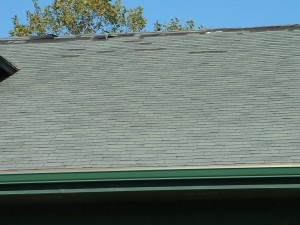The Federal Emergency Management Agency (FEMA) publishes a variety of materials that deal with preparation, prevention, and safety tips for homes. Preparing for winter requires special inspection and maintenance steps to prevent damage and danger to occupants.
Before Winter Storms and Extreme Cold
Add the following supplies to your disaster supplies kit:
- Rock salt to melt ice on walkways
- Sand to improve traction
- Snow shovels and other snow removal equipment.
Prepare your home and family
· Prepare for possible isolation in your home by having sufficient heating fuel, because regular fuel sources may be cut off. For example, store a good supply of dry, seasoned wood for your fireplace or wood-burning stove.
· Winterize your home to extend the life of your fuel supply by insulating walls and attics, caulking and weather-stripping doors and windows, and installing storm windows or covering windows with plastic.
· Winterize your house, barn, shed or any other structure that may provide shelter for your family, neighbors, livestock or equipment. Clear rain gutters; repair roof leaks and cut away tree branches that could fall on a house or other structure during a storm.
· Insulate pipes with insulation or newspapers and plastic and allow faucets to drip a little during cold weather to avoid freezing. Be certain that your waste plumbing system will safely handle the water without clogging or freezing.
· Keep fire extinguishers on hand, and make sure everyone in your house knows how to use them. Use one outside to familiarize yourself with the pressure and dispersion, and then have it recharged immediately.
· House fires pose an additional risk, as more people turn to alternate heating sources without taking the necessary safety precautions.
· Learn how to shut off water valves (in case a pipe bursts).
· Know ahead of time what you should do to help elderly or disabled friends, neighbors or employees.
· Hire a contractor to check the structural ability of the roof to sustain unusually heavy weight from the accumulation of snow – or water, if drains on flat roofs do not work.
Dress for the Weather
· Wear several layers of loose fitting, lightweight, warm clothing rather than one layer of heavy clothing. The outer garments should be tightly woven and water repellent, and bright colors are suggested for safety.
· Wear mittens, which are warmer than gloves.
· Wear a hat. Body heat escapes rapidly from the head.
· Cover your mouth with a scarf to protect your lungs.
Winter Fire Safety Tips from The U.S. Fire Administration
§ Smoke alarms should be installed on every level of your home. Test the batteries every month and change them at least once a year or when the alarm ‘beeps’ at regular intervals.
§ Space heaters should have an automatic emergency shutoff device in case they tip over. Only use the fuel recommended by the manufacturer.
§ Never refill a space heater while it is operating or still hot. Refuel outside, away from the house.
§ Wood stoves must be properly installed, away from combustible surfaces, have the proper floor support and adequate ventilation.
§ Never use flammable liquids, such as gasoline or lighter fluid, to start or accelerate a fire.
§ Have furnaces and chimneys professionally inspected annually and cleaned if necessary. Creosote buildup is a common cause of chimney fires.
§ Use a glass or metal screen in front of fireplaces to prevent sparks from igniting nearby carpets or furniture.
§ Never thaw frozen pipes with a blowtorch or other open flame. Use hot water or a UL listed device such as a hand-held dryer.
§ Dispose of hot ashes in tightly sealed metal containers placed away from the house.
§ Don’t use the oven to heat homes. Besides being a fire hazard, it can be a source of toxic fumes.
§ Keep fire hydrants clear of snow for easy access.



